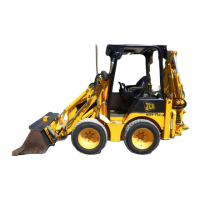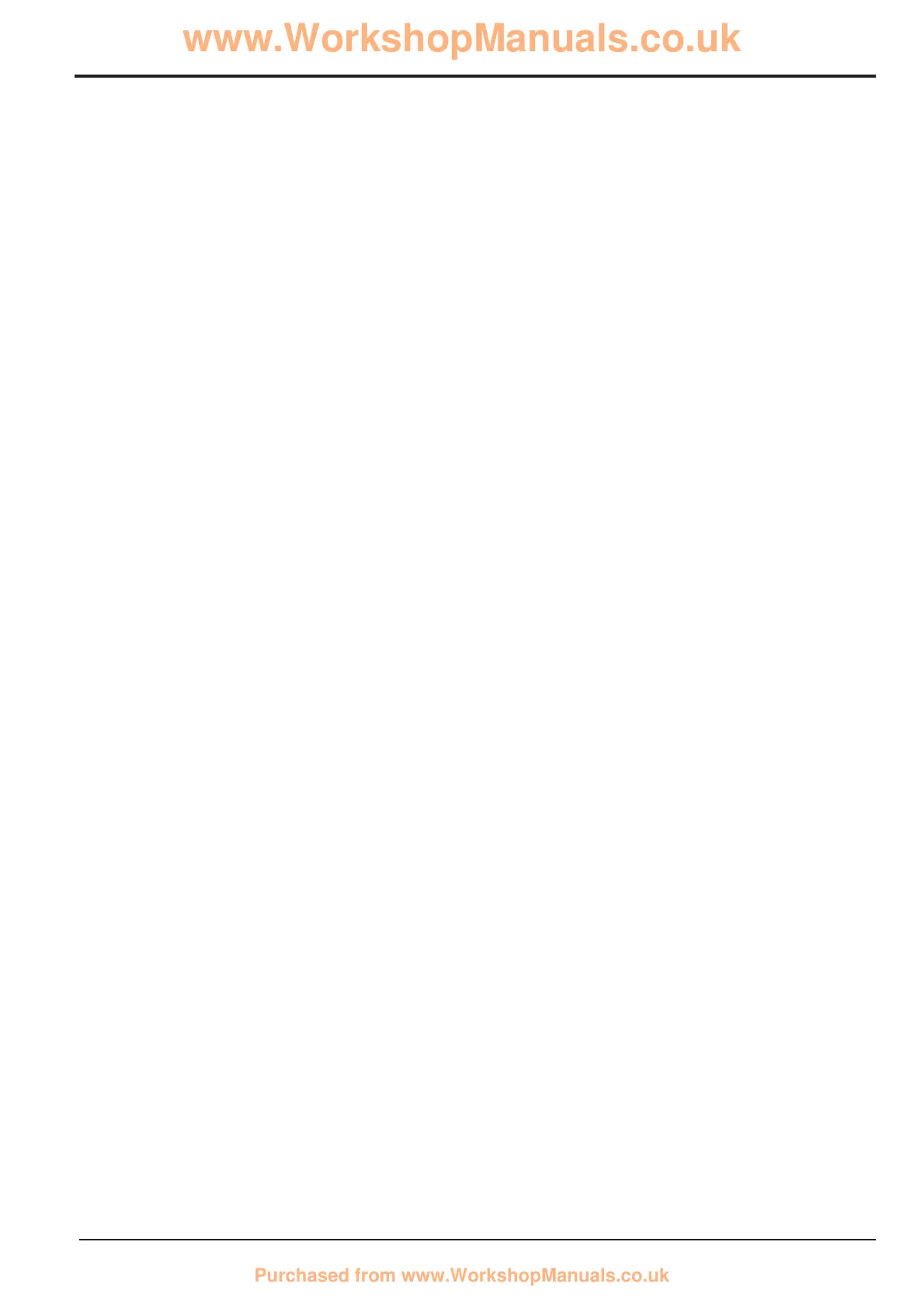12 - 18
Auxiliary Pump (Standard machines)
Removal and Replacement
Remove bolts X and lift the pump away from the main pump
unit.
On replacement, torque tighten the bolts to 77 Nm (57 lbf ft,
7.9 kgf m).
Dismantling and Assembly
The numerical sequence shown on the illustration is
intended as a guide to dismantling.
For assembly the sequence should be reversed.
Dismantling
Remove coupling A if still fitted.
Hold the body in a soft jawed vice with the mounting flange
uppermost. Mark all parts to ensure correct alignment when
assembling. Discard all seals and sealing rings.
Clean all parts in light aromatic kerosene, examine for
damage and wear.
Damaged or worn parts must be renewed.
Inspection
It is normal for the gears to have cut a slight track in the
body bore on the inlet side. The gear track wear can not be
measured accurately but will be related to bearing wear.
Examine the bearing bores C which are coated during
manufacture with PTFE. If the grey PTFE is worn through so
that the bronze base is visible, the complete pump must be
renewed.
Renew the pump if the bearings are scored or if the gear
side faces are chipped or damaged. DO NOT use any
abrasives on the bearings or gears as this would destroy
critical manufacturing dimensions.
Assembly
Fit the pressure loading ring/backing ring 10 and sealing
rings 11 to the flange 2 and cover 8. A little grease (JCB
MPL Grease) in the grooves will help retain them.
Hold the flange 2 in a soft jawed vice with the sealing rings
facing upwards and assemble the body 3. Ensure that the
body cut-in track corresponds to the inlet side of the flange.
Assemble the gear/bearing pack components 4, 5, 6 and 7
separately. It is important to return the flange end bearing 6
to the flange end of the unit, otherwise internal leakage can
occur due to bedding in. Ensure that the bearing face
recesses B are adjacent to the gear faces and that the
relieved radii are both towards the pump outlet.
Lightly lubricate the body bore and bearings, then push the
gear/bearing pack into the body.
Fit the cover 8, ensuring the inlet side is in the correct
position. Torque tighten bolts 1 to 61 - 68 Nm (45 - 50 lbf ft,
6.2 - 7.0 kgf m).
If the inlet adapter is disturbed, fit a new ‘O’ ring and tighten
to 115 - 145 Nm (85 - 107 lbf ft, 11.7 - 14.8 kgf m). Do not
overtighten.
If the outlet adapter is disturbed, clean the threads and
apply JCB Threadlocker and Sealer to two of the threads.
Tighten to 95 Nm (70 lbf ft, 9.7 kgf m). Do not overtighten.
When refitting the auxiliary pump to the Hydrostatic pump,
tighten mounting bolts to 77 Nm (57 lbf ft, 7.9 kgf m).
Testing
Install the pump onto a suitable test rig and test as follows.
Test Data
Oil Viscosity 40 - 45 cSt at 50 °C, (122 °F)
Oil Temperature 45 - 50 °C (113 - 122 °F) at pump inlet
Test Speed 1500 rev/min nominal
Run pump initially off load and check for leaks. Increase
pressure in stages of 40 bar (600 lb/in
2
, 40 kg/cm
2
) and
allow to run for 1 minute at each stage. This will allow
components to readjust and flow readings will indicate if re-
build is correct. Check pump output under the following
conditions.
Pressure230 bar (3335 lb/in
2
, 230 kg/cm
2
)
Minimum Flow 22 l/min (4.8 UK gal/min, 5.8 US gal/min)
Section E Hydraulics
9803/8550
Section E
*12 - 18
Issue 1*
Pumps
*
*

